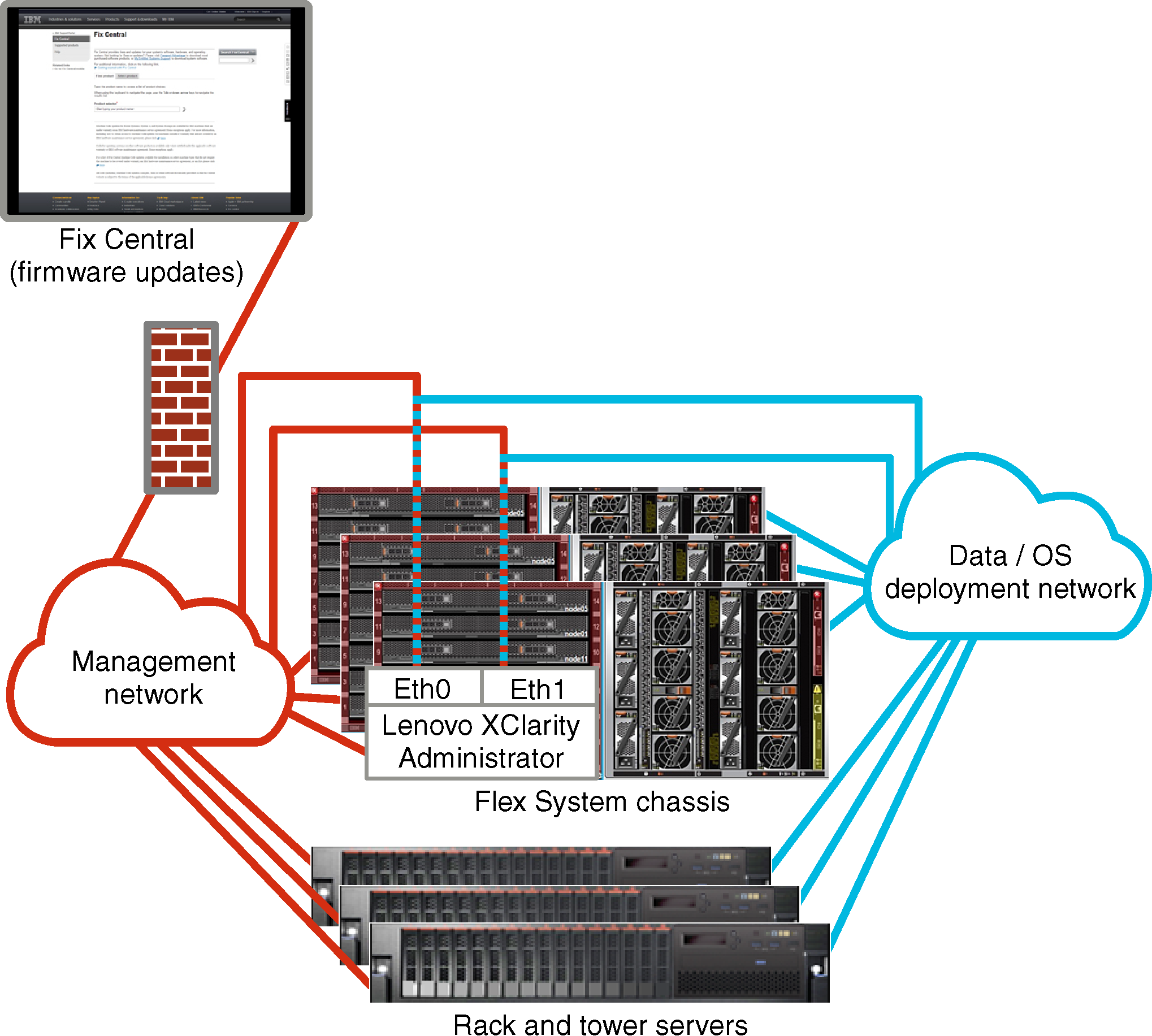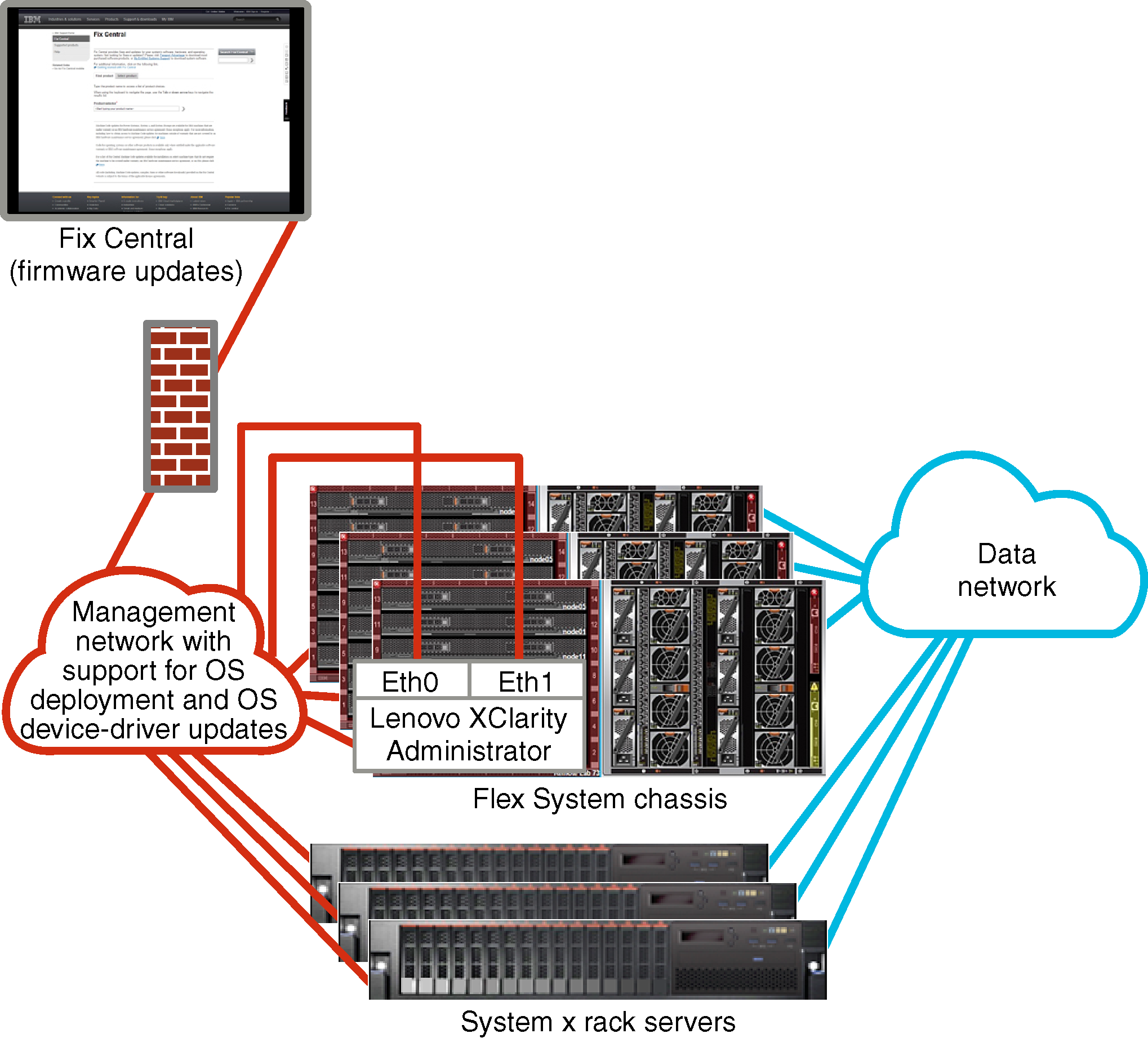Virtually separate data and management network
In this topology, the data network and management network are virtually separate. Packets from the data network and packets from the management network are sent over the same physical connection. VLAN tagging is used on all management-network data packets to keep the traffic between the two networks separated.
Note
If Lenovo XClarity Administrator is installed on a host running on a managed server in a chassis, you cannot use XClarity Administrator to apply firmware updates to that entire chassis at one time. When firmware updates are applied, the host system must be restarted.
When you install XClarity Administrator, define network settings using the following considerations:
- The first network interface (typically the Eth0 interface) must be connected to the management network and configured to support the device discovery and management (including server configuration and firmware updates. It must be able to communicate with the CMMs and Flex switches in each managed chassis, the management controller in each managed server, and each RackSwitch switch.
- The second network interface (typically the eth1 interface) can be configured to communicate with an internal data network, a public data network, or both.
- If you intend to acquire firmware and OS device-driver updates using XClarity Administrator, at least one of the network interfaces must be connected to the Internet, preferably through a firewall. Otherwise, you must import updates into the repository.
- If you intend to collect service data or use automatic problem notification (including Call Home and Lenovo Upload Facility), at least one of the network interfaces must be connected to the Internet, preferably through a firewall.
- If you intend to deploy operating-system images and update OS device drivers, you can choose to use either eth1 or eth0 interface. However, the interface that you use must have IP network connectivity to the server network interface that is used to access the host operating system.NoteIf you implemented a separate network for OS deployment and OS device-driver updates, you can configure the second network interface to connect to that network instead of the data network. However, if the operating system on each server does not have access to the data network, configure an additional interface on the servers to provide connectivity from the host operating system to the data network for OS deployment and OS device-driver updates, if needed.
- You can set up XClarity Administrator on any system that meets the requirements for XClarity Administrator, including a managed server only when you implement either a single data and management network topology or a virtually separate data and management network topology; however, you cannot use XClarity Administrator to apply firmware updates to that managed server. Even then, only some of the firmware is applied with immediate activation, and XClarity Administrator forces the target server to restart, which would restart XClarity Administrator as well. When applied with deferred activation, only some firmware is applied when XClarity Administrator host is restarted.
Figure 1 shows an example implementation of virtually separate management and data networks in which the operating-system deployment network is configured as part of the data network. In this example, XClarity Administrator is installed on a managed server in a chassis.
Figure 1. Example implementation of virtually separate data and management networks with the operating-system network as part of the data network


Figure 2 shows an example implementation of virtually separate management and data networks in which the operating-system deployment network is configured as part of the management network, and XClarity Administrator is installed on a managed server in a chassis. In this implementation, XClarity Administrator does not need connectivity to the data network.
Note
If the operating-system deployment network does not have access to the data network, configure an additional interface on the servers to provide connectivity from the host operating system on the server to the data network, if needed.
Figure 2. Example implementation of virtually separate management and data networks with the operating-system network as part of the management network


Give documentation feedback